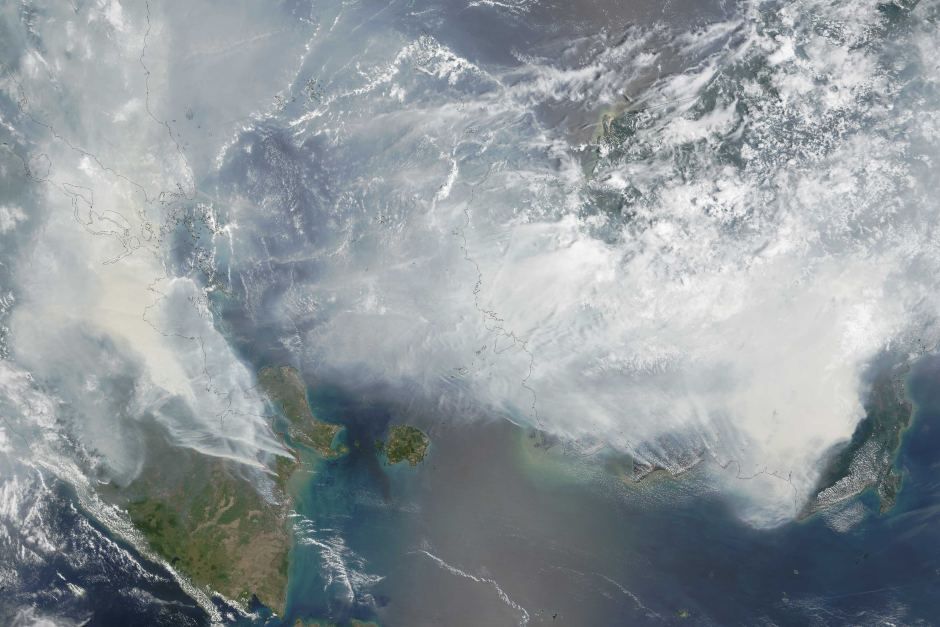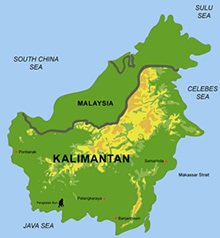news

Be informed
Read the latest documents which tells you what kalteng consultants is doing.
- 2016 Marrakech Action Proclamation for our ...
- Peatland Restoration Agency, Republic of ...
- 2015 United Nations Climate Change Conference in ...
- Indonesia's Silent Tragedy in a Connected World ...
- Report by John Macdonald about the ongoing peat ...
- Indonesia's Fire Crisis — The Biggest ...
- Carbon emissions from Indonesia’s peat fires ...
- Get Your Facts Right on Indonesia's Haze
- Indonesia president visits forest fires amid smog ...
- Again El Nino year 2015: Hot Spots from Borneo ...
- El Nino year 2014: Hot Spots from Borneo taken on ...
- UNFCCC-Warsaw Conference - Framework for REDD+ ...
- Disappointing outcome for forests in Doha, but ...
- Governors Climate and Forests Rask Force, GCF, ...
- 2011 LIDAR- and RGB-Survey in Kalimantan ...
- UNFCCC Climate Summit in Cancún, Mexico, COP16; ...
- Reducing emissions from peatlands under REDD, WI ...
- Palangka Raya Declaration on REDD+ and MRV in ...
- Excursion to the burned Taruna-Base Camp in Block ...
- PRESS RELEASE. RAGING FOREST FIRES THREATEN WILD ...
- Milan Geoservice Calendar with Indoneisan ...
- An Investigation of LiDAR Data Processing in ...
- Successful Helicopter Flight Trials with Airborne ...
- Kalteng Consultants had an audience with the ...
- Declaration on the Heart of Borneo Initiative, ...
- 2006 Fires in Kalimantan, next El Nino Southern ...
- Suwido Limin, director of UNPAR/CIMTROP Fire ...
- The Amount of Carbon released from Peat and ...
- Kalteng Consultants Office, since
gallery

image gallery
Find a large collection of images from many years of exploration by kalteng-consultants.
news
Carbon emissions from Indonesia’s peat fires exceed emissions from entire U.S. economy

Report - 16th October 2015
Indonesia's carbon bomb goes off, with emissions from peat fires reaching and possibly exceeding their highest levels in 1997-1998.
Greenhouse gas emissions from peat fires in Borneo and Sumatra are currently exceeding emissions from the entire U.S. economy, putting Indonesia on track to be one of the world’s largest carbon polluters this year, according to data published a researcher at the University of Amsterdam.
By Guido van der Werf’s calculations — posted on the Global Fire Emissions Database (GFED) website — carbon emissions from Indonesia’s fires have just topped the CO2 equivalent of a billion tons — more than the annual emissions of Germany. Since the beginning of September, Indonesia’s fires have been emitting carbon at a rate of 15-20 million tons per day, or more than the 14 million tons emitted on a daily basis by the whole American economy.
Shockingly, the estimates are likely conservative because they account for carbon dioxide (CO2), methane (CH4), and nitrous oxide (N2O) emissions only from fire. They don’t include emissions from peat oxidation.
“1997-1998 was exceptional. 2015 is exceptional as well but […] I do not think it will exceed 1997-1998 unless the wet season is delayed even more than in that year.”
While fires occur on an annual basis in Indonesia, they are especially bad this year due to dry El Nino conditions, which turn drained and deforested peatlands into a tinderbox.
But El Nino is no excuse — humans are responsible for both lighting fires and creating conditions that enable them to burn.
“The forests in Indonesia are generally not flammable, so these fires are virtually all caused by people, or land clearing. There is little enforcement and little capacity to actually put them out once they’ve started.”
Over the past 30 years, millions of hectares of rainforests and peat swamps have been cleared and degraded, leaving scrub and dried peat that easily burns and is extremely difficult to extinguish once ignited. Much of the environmental degradation has been driven by logging and conversion for industrial oil palm and timber plantations.
The bad news is fires and haze may get worse before they get better. While the Indonesian government has asserted all the fires will be extinguished within a few weeks, scientists quoted by NASA say this year’s fires are pacing well ahead of anything seen since 1997-1998, when Indonesia’s fires were considered a global catastrophe.
“Conditions in Singapore and southeastern Sumatra are tracking close to 1997,” Robert Field, a Columbia University scientist based at NASA’s Goddard Institute for Space Studies, was quoted as saying.“If the forecasts for a longer dry season hold, this suggests 2015 will rank among the most severe events on record.”
The haze, a result of forest fires in parts of Indonesia, is set to remain until November, due in part to the dry spell caused by the El Nino effect said to be among the strongest since records were kept in 1950.
“Surely the 1997-98 El Niño and resulting fire disaster is still burned in the memory of at least a few top-level decision-makers,” Meijaard wrote. “It should have been obvious that it would be a really bad fire year again. And what did the responsible government authorities do to prevent this man-made, not natural disaster? Not enough, apparently.”
Conservation scientist Erik Meijaard added: “Why is no one in the government taking responsibility? Has anyone said ‘sorry’? Has anyone been fired or resigned because of his or her failure to predict and prevent the present disaster? The government has had long-standing programs to prevent land fires and clearly these are not working. Where is the accountability?”
“Why has no official stepped forward in Indonesia to put up his or her hand, said mea culpa and acknowledged the failure to avoid an environmental and social disaster that is costing the country and its neighbours at least $47 billion – and counting? That is 0.5 percent of Indonesia’s GDP.”
Those in charge in Indonesia need to get strategies and laws in place now, Meijaard says. “It might be a good idea for some senior government officials and legislators involved in the fire and haze issue to spend the next few weeks in Kalimantan’s or Sumatra’s peatlands and help fight fires … Maybe that kind of up-close and personal experience of health impacts, failed harvests, and cancelled flights might get the message across that fires and haze are not a natural phenomenon, but a man-made disaster.”
Indonesia's National Disaster Management Agency (BNPB) said that it will need not only more boots on the ground to fight the fires, but also more money to deal with the crisis.
"The number of forest and land fires still has the potential to rise until end-November," said BNPB spokesman Sutopo Purwo Nugroho during a press briefing.
Local health and economic impacts of fires have continued after the recent El Niño years of 2002 and 2006. In 2006, Central Kalimantan experienced “unhealthy” or “dangerous” air quality on over 80% of days from September through November (Harrison et al., 2009). The province has the highest rate of asthma anywhere in Indonesia (DNPI, 2010).
A total of 1,042 hotspots were recorded in the province in the morning of October 15 Anton of the local meteorology office stated here on Friday.
Haze arising from forest and plantation fires in Central Kalimantan Province has drastically reduced visibility to below 50 meters and air quality of Palangka Raya has reached a hazardous level and can impact the health of the public, he pointed out. The Pollutant Standard Index (PSI) has been recording levels close to a staggering 2,000, reaching as high as 2,900.
Health Minister Nila Djuwita F. Moeloek had earlier noted that the normal air pollution standard index is 0-50 pm, and above 300 pm is considered hazardous to health.
She called on the local inhabitants to stay indoors and wear face masks if they had to engage in outdoor activities.
At least 307,360 people in six Indonesian provinces from June 29 to October 5, 2015, had sought medical treatments for respiratory ailments and other diseases caused by smoke or haze from forest fires originating from Indonesias Sumatra and Kalimantan Islands.
"The number of patients visiting health facilities has increased by 15-20 percent over the last three weeks. The condition will be very worrisome if the smoke problem is not promptly tackled," Health Minister Moeloek informed the press on Oct. 6.
People residing in haze-affected regions have mostly suffered from acute respiratory infections, eye and skin irritations, pneumonia, asthma, and diarrhea.
The health ministrys Health Crisis Mitigation Center has recorded some 45,668 cases of haze-related health problems in Riau, 69,734 in Jambi, some 83,276 in South Sumatra, 43,477 in West Kalimantan, 29,104 in South Kalimantan, and 36,101 in Central Kalimantan.
Facing growing pressure, Indonesia has accepted International help, including six aircraft from Singapore, Malaysia and Australia.
An aerial response firefighting team departed Australia on Tuesday 13th October to assist Indonesia in its efforts to combat forest fires in South Sumatra.
Two aircraft, a L100 Lockheed C130 Water Tanker (Thor) supported by a Turbo Commander 690B lead plane, have now arrived in Sumatra and commenced operations on Wednesday.
They are part of the deployment of 32 water-bombing planes and helicopters, assisting the more than 22,000 personnel on the ground.
However, International efforts to douse raging Indonesia fires will fail and South-East Asia could face several more weeks of choking smoke until the rainy season starts, Malaysia's environment minister has warned.
"Unless there is rain, there is no way human intervention can put out the fires," said natural resources and environment minister Wan Junaidi Tuanku Jaafar
"Maybe it will last until December and January," said Herry Purnomo, a scientist at the Center for International Forestry Research, adding that hot spots had reached Papua, a region that usually avoids widespread fires
Indonesia usually enters its wet season in October and November, but this year the country is expected to face moderate El Nino dry conditions which could strengthen until December and may hinder efforts to control the fires.
Indonesia's national disaster management agency has made several forecasts for when the forest fires will be brought under control, many of which have now passed.

